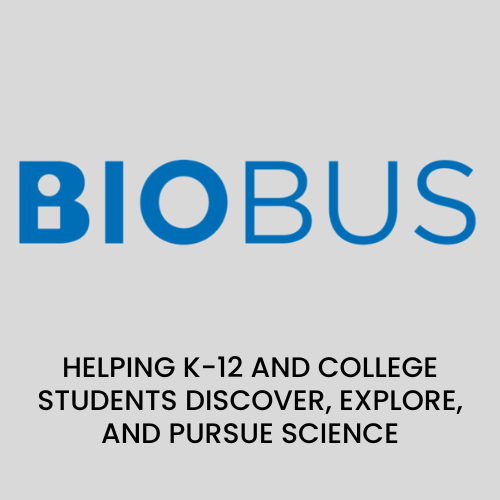CivicSciTimes - Stories in Science
If You Give An Artist A Data Sheet…
Maya Sokolow: “What I began to understand that day on St. John was that science needs to be experienced, lived, and felt. For those who do not have the opportunity to have feet on the field or in the classroom, the act of feeling, internalizing, empathizing with the subjects of scientific inquiry, helps put abstract concepts into legible, relatable terms.”

Maya Sokolow
[su_boxbox title=”About”]Maya Sokolow recently received her BA in Written Arts from Bard College, and is now teaching Visual Arts to refugee and asylum-seeking children at the Refugee Youth Summer Academy in New York City. Learn more about her work through her Instagram page and her website https://www.mayasokolow.com. Cover Image of Waterlemon Cay, St. John USVI is by M. Sokolow.[/su_boxbox]
[su_boxnote note_color=”#c8c8c8″]Key Take Aways
- People won’t care about what they don’t understand.
- Artists and storytellers must collaborate with scientists to educate the world on climate issues.
- Empathizing with a parrotfish can change the world.[/su_boxnote]
[dropcap]A[/dropcap]s an artist and self-professed layperson, my conception of climate change has largely been emotional. For a time, thoughts of rising tides, mass extinction, drought, floods, super hurricanes, and dying livestock settled into a formless and unproductive terror, too vast and uncomfortable to stare at for long. I wanted to help, to lob even a single panicked starfish back into the proverbial sea, as the story goes. However, my lack of STEM know-how frequently left me feeling alienated in the science classroom. Science meant math, and math meant acid reflux. Science was an art form I could not step into, a bridge I could not cross, and, paraphrasing the words of forestry engineer Baba Dioum, a temple I could not love because I did not understand.

Maya Sokolow
No amount of studying could decode that language of theories and laws – both abstract and concrete, difficult to point to and impossible to break – and my interest in creative storytelling art forms felt irrelevant in a world I (falsely) deemed clinical and prescriptive. It wasn’t until the second semester of my junior year of college, when I found myself studying abroad on the SSV Corwith Cramer with SEA Semester’s Colonization to Conservation in the Caribbean program that this attitude towards science, and my role as an artist in the climate crisis, began to change.
I came to the program with romantic aspirations and broad misconceptions regarding just how violent and intense life at sea would actually be. The learning curve was steep: my first night on watch duty (known also as steer the ship, set the sails, and make sure nobody falls off) included highlights such as vomiting off the side of the ship into churning patches of bioluminescence, dramamine-induced auditory hallucinations, and of course, a torrential downpour. Three days into the journey, seasick and weak, anchored on St. John, my idyllic visions of the sea had evaporated, and I found myself feeling quite useless on the voyage.
But then we arrived at Waterlemon Cay.
One of the top snorkeling spots on the US Virgin Islands, Waterlemon Cay is famed for its lush reefs and pristine emerald waters. We had come to complete an hour-long survey of the reef’s biodiversity, expecting to bob in clusters atop the surface and gawk at a flourishing cornucopia of marine fauna and flora. A few minutes in the water and reality settled in. Our expedition found, in stark contrast to my utopian reef pipe dream, that a changing planet had already tipped the delicate balance of the reef’s resources into a zone of ruin and decay. Shards of coral, bleached from acidic and warming waters had shattered in the aftermath of Hurricane Maria, which had devastated islands like St. John and Puerto Rico four months prior to our visit. Critical seagrasses stood in balding patches, too puny to keep shore runoff from the reef’s unguarded edges. Here, a juvenile Parrotfish pecked dumbly at floating detritus, and there, an Angelfish hung solo in an impressive and eerie quiet. The suffering of this small reef was palpable, its prognosis grim.
Scientists are an essential force in the global project of curbing the affects of man-made climate change. But they are not the only ones who have something to offer.
Very few of us had found much of anything, with the exception of sea sponges, spineless opportunists thriving in the reef’s decay. Ashore again, we began our trek a few miles back to our ship in a disjointed and uncomfortable stream. Here it was, the shadow of a changing planet. I had seen it with my own eyes, and I was angry. The quiet of the reef, the absence of color and life felt like a community ravaged by disaster. Those few fish we encountered struggled to survive in the ruins of a place their ancestors had thrived in. They grappled with a change brought on by forces beyond their control, struggling to sustain themselves enough to survive, let alone reproduce. Unlike their ancestors, they would leave little behind.
To be clear, I’m talking about fish. I’m talking about fish as though they had a concept of ancestry, legacy, a sense of community, or even the capacity for loneliness. Whether or not fish have access to these concepts and feelings is not for me to say. I’m talking about fish in terms a human might understand, perhaps a human whose community has fallen upon hard times, who has experienced loss, or a feeling of instability. Many of us can understand this feeling, can conjure up this image, can project ourselves onto nature in a way that leads to a deeper understanding of this natural world interwoven with our own. And if that feeling sparks action, even action on the smallest scale, the world and all of its people, places, and things wrapped up in a web of mutual dependence and care, could change.
What I began to understand that day on St. John was that science needs to be experienced, lived, and felt. For those who do not have the opportunity to have feet on the field or in the classroom, the act of feeling, internalizing, empathizing with the subjects of scientific inquiry, helps put abstract concepts into legible, relatable terms. Suddenly my arts training felt relevant and useful in the conservation effort: the ability to translate hard data into a story, with a beginning, middle, and end, clear characters, and very high stakes is one which could help others engage with and learn about endangered species, threatened habitats, the changing air quality, and rising water temperatures, in a way that feels relevant and urgent in their lives.
This is not a new idea by any measure. A number of scientists, artists, scientific artists, and artistic scientists, have examined this critical collaboration between their respective fields. Most notably in my reading is Ursula K. Le Guin’s essay, “Deep in Admiration,” in which she offers, “Science describes accurately from outside; poetry describes accurately from inside. Science explicates; poetry implicates. Both celebrate what they describe. We need the languages of both science and poetry to save us from merely stockpiling endless “information” that fails to inform our ignorance or our irresponsibility.” The arts allow us a path through which we might recognize and commune with the non-human life caught up in this same web of care and struggle for survival. Sometimes all the artist needs to do in-order to create that connection is to get us asking questions. For example, German poet Paul Celan’s piece Threadsuns— translated by Pierre Joris— demonstrates how poeticism and sheer imagination can invoke the world of a tree and at the same time invite us into that world by piquing our curiosity.
Threadsuns
above the grayblack wastes.
A tree-
high thought
grasps the light-tone: there are
still songs to sing beyond
mankind.
Celan has undertaken the impossible task of illuminating a space and consciousness ‘beyond mankind,’ in which light itself— our commonly shared life source— is tonal and kinesthetic, a song— and perhaps a culture— both unknowable and untouchable. But what is this ‘high thought’ that claims to dwarf the thoughts of humankind? Is it the sunlight? The shifting of the forest in the breeze? A secret language among the trees? Though this song, accessed only by the trees high above our heads, will allegedly outlive us, Celan has invited us to imagine for ourselves this illusive sound, the dense stillness of the forest, the tendrils of sunlight, the natural world beyond civilization which the majority of us rarely step into, much less imagine from the inside out. The notion that trees, plants, fish, the Ozone layer, a polar ice cap, could have a song to share with us — a song to be sung beyond us — is thrilling. When we begin to make space for the material world to exist in these terms, we develop new relationships and a deeper consideration and curiosity for that world.
Without a doubt, scientists are an essential force in the global project of curbing the affects of man-made climate change. But they are not the only ones who have something to offer. Scientists and artists, technicians and storytellers, must work together to produce narratives that everyone can access. The first step to caring about the world is understanding it, and while I cannot for the life of me explain the chemistry or physics or geology or biology of the ocean, I can tell you a story that might get you to care just enough to want to learn more.
Metrics
Sessions
Total number of Sessions. A session is the period time a user is actively engaged with the page.
Visitors
Users that have had at least one session within the selected date range. Includes both new and returning users.
Page views
Pageviews is the total number of time the article was viewed. Repeated views are counted.
The CS Media Lab is a Boston-anchored civic science news collective with local, national and global coverage on TV, digital print, and radio through CivicSciTV, CivicSciTimes, and CivicSciRadio. Programs include Questions of the Day, Changemakers, QuickTake, Consider This Next, Stories in Science, Sai Resident Collective and more.

-
Civic Science Times2 months ago
Examining science and art collaborations through a social psychology lens reveals the need for third spaces
-
Civic Science Times1 month ago
ScienceWriters2025 conference is actively seeking new venues, sponsors, and partners. Read their statement to explore ways to help.
-
CivicSciTV - Questions of the Day1 month ago
Part time bartender & scientist, JP Flores, talks about new funding to support a community engagement project in North Carolina
-
Civic Science Times1 month ago
New survey explores what people in South Africa expect of publicly visible scientists – why it matters






















